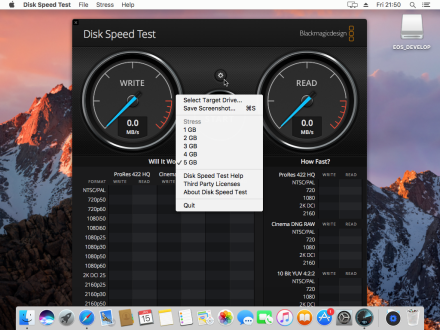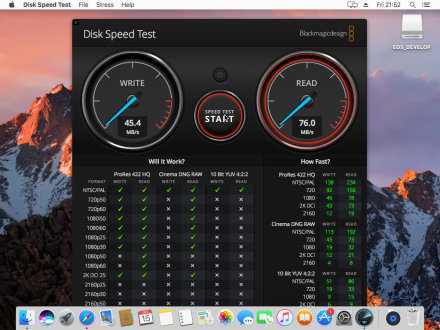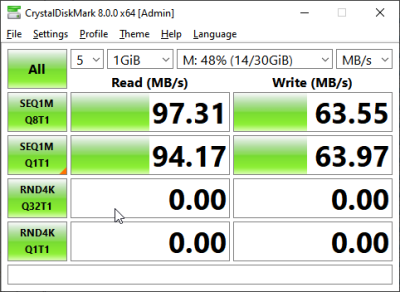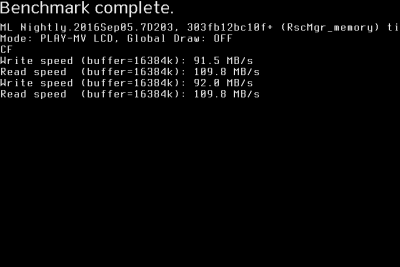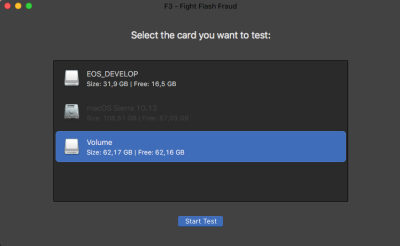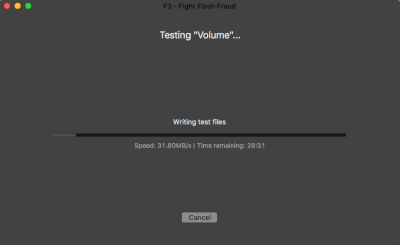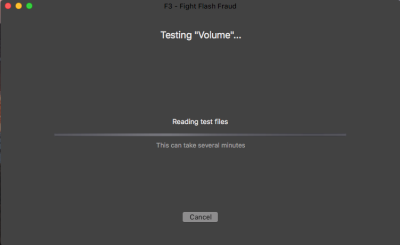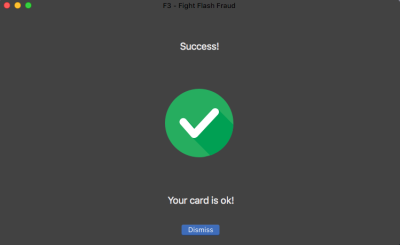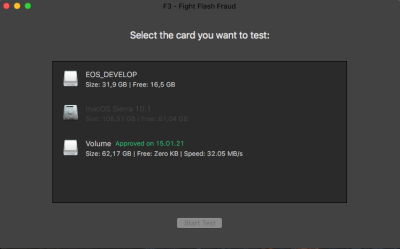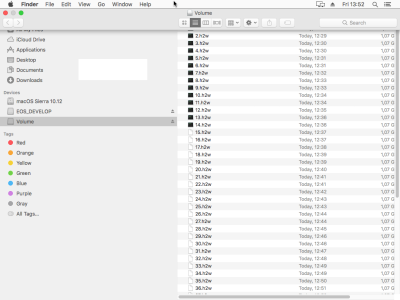Table of Contents
Magic Lantern's Haunted House of Cards
Baselining
Benchmark your cards
Benchmark with your PC
Benchmark inside camera
Fight Flash Fraud
The problem:
Product forgery sadly is wide spread among flash memory devices. And purchasing from “trusted” sellers doesn't exclude you to get a manipulated device. So you are strongly adviced to verify memory device integrity before using it in any way.
Memory devices can easily be manipulated and your camera and your PC are not designed to detect that. Both devices expect all connected memory devices to be trustworthy and your camera and PC will act like all memory device information is good as gold. If a scammer overwrites a flash card's internal capacity information to sell a 16 GByte card as a 128 GB (for example) your PC will act like the card capacity is 128 GB.
And this will happen: Everything is just perfect until the card's real capacity (in this case: 16 GB) is reached. But every byte beyond that limit will be written from the very beginning of the card. Overwriting essential information and most likely overwriting all the pics/footage you have stored before. To clarify: All data will be overwritten! Your data will be lost and overwritten data cannot be restored by data recovery!
What to do? It is strongly recommended to verify card integrity with tools like h2testw or F3/F3 QT right after purchase. Those tools are freeware and easy to use.
Windows: h2testw
German IT magazine c't published h2testw (freeware) to give Windows users a chance to detect flash fraud. This is the download site. Sorry, german only but the program lets you select german/english language. After downloading zipped file you can expand contents anywhere. H2testw.exe runs without installation and does not require admin priviledges. Readme.txt in english is included.
Run H2testw.exe
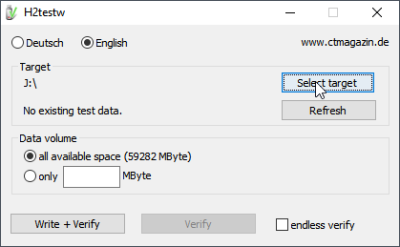
Select English to change user interface language.
Select target device = your memory card.
Data volume: all available space. (Number in brackets may be different)
Click button “Write + Verify”. A message box will be seen:
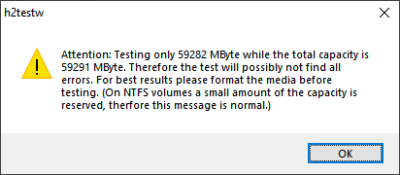
This warning is just for information. This very small area not tested will most likely not affect fraud detection. Scammers usually don't manipulate device info by a fraction that small. 
After confirming “OK” h2testw will begin to write data to selected memory device.
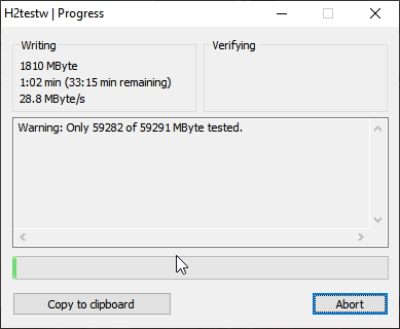
Test run can take quite a while. H2testw is not optimized for pure write/read speed. In most cases data transfer rates will be around 30 percent slower than maximum sequential write limit.
After write cylce h2testw will automatically proceed with read/verify cycle.
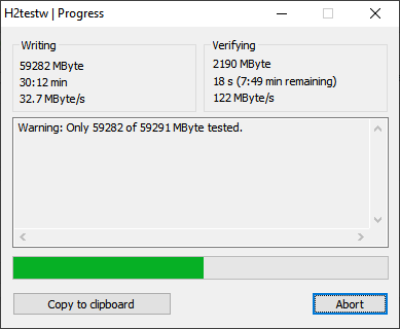
Test result for a card not manipulated by a scammer:
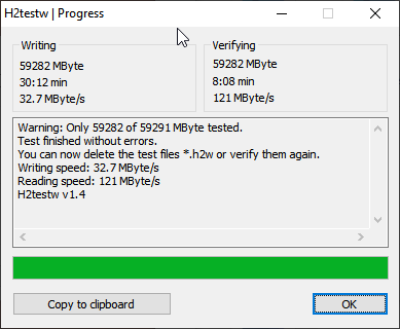
As stated in test results you will find card filled with *.h2w files. You have to delete them manually.
If h2testw testrun ends with an error message your card may be manipulated! Verify test results by a second run and - in case second run gives the same results - contact your seller for refund/replacement!
macOS/OS X/Linux: F3/F3 QT/F3X
The ruthless internet community created their own versions for Linux and macOS/OS X. Linux users may find f3 included in their distribution or may want to compile their own version from source. F3 is open source. Description will be find here: Click me! I will not repeat all the steps here because I think you know what you are doing and a proper documentation already exists!
Mac users may not be feeling comfortable compiling on their own. For those users a compiled program is available.
Data recovery
ExFAT
Big Sur, Canon and ExFAT
Camera compatibility
In-cam format and card size
FAT32
File system used as default by small and medium sized data storage cards. Supported by all cameras able to run ML. Supports file size up to 4 GB.
Incompatible cards
Do not try to use these cards/adapters with ML:
First Eye-Fi generation
They won't work at all. ML's process of checking for a bootable card is incompatible with old EyeFi-firmware (yes, your Eye-Fi card has its own firmware). If you want to use first gen Eye-Fi with a camera with ML bootflag set: Nope, it wont work at all. You have to uninstall ML from camera (=remove cam's bootflag) before using such cards.
ML devs aren't able to fix this issue.
All other tested WiFi cards will work just fine!
Sony 94MB/s 32 GB SDHC
Not exactly incompatible but with strange performance issues in some (not all!) Canon cameras. See https://www.cameramemoryspeed.com/reviews/sd-cards/sony-32gb-sdhc-memory-card/ for details.
Recommended not to use them because of known inconsistencies. (Confirmed by user andy kh on 70D).
Because they are not longer in production you will likely never meet one. All other Sony cards (including successor 95 MB/s variety) are working without hick-ups.
SD-to-CF adapters
Frequent issue: Trying to make an SD-card work in a CF-card slot by inserting card into an adapter. Frankly, most adapters are just crap. There are some adapters able to work with ML's method of checking for a bootable card. But most will just get your cam stalled. It is strongly recommended not to use SD-to-CF adapters with Magic Lantern. ML project does not support it and in case of failure you won't get any help.
There is no issue on ML's side using microSD-to-SD adapters.
Micro-SD
Canon Support is adamant about using microSD-cards with adapters for full-size SD-card slot: It is a strict no-go!
For ML it doesn't make a difference: microSD-to-SD adapters do not contain any compontents but contacts and very short wiring. There is no perceivable performance drop with adapters.
Exception: Performance drop will indeed be seen if used with very, very cheaply made adapters where some data lines are simply not connected. I haven't come across such an adapter my whole life. All manufacturers I know ship their microSD-cards with an adapter and those offer a full set of data lines. To be shure do some benchmark runs with/without adapter using a cardreader and your PC. If a data line is missing performance will drop by a huge margin (25 percent and higher).
UHS-II cards
At the moment no ML supported cam does have an UHS-II slot. An UHS-II card inserted into a non-UHS-II device (as your ML camera) will run in a so called “UHS-I compatibility mode”. Performance in UHS-II and UHS-I modes are completely independent! To make it absolutely clear: A card with stellar UHS-II performance may (or not) have an unsatisfactory UHS-I performance. Examples for this:
SanDisk Extreme Pro 280MB/s 32GB UHS-II SDHC (SDSDXPB-032G): One of the first UHS-II cards.
Write rate in UHS-II mode: Up to 241 MByte/s*
Write rate in UHS-I mode: Up to 46 MByte/s*
This card doesn't even perform well in UHS-II mode and UHS-I mode is even worse.
Panasonic MicroP2 UHS-II 32GB: First UHS-II card
Read rate in UHS-II mode: Up to 275 MByte/s*
Write rate in UHS-II mode: Up to 50 MByte/s*
Write rate in UHS-I mode: Up to 38 MByte/s*
*Copyright: Data by www.cameramemoryspeed.com
Don't get me wrong, most current available UHS-II cards do perform pretty well in UHS-I compatibility mode and are only a tad slower compared to fastest UHS-I cards. But you have to take special care if you select UHS-II cards for your UHS-I camera if you go for performance. And most benchmarks available on the web don't make a difference and test UHS-II mode only.
About overclocking: ML project has no reliable data how well an UHS-II card in UHS-I-compatibility mode runs with overclocking. We simply cannot say how reliable it is or if it runs smoothly without killing your precious card.
Storage size: Mega and Giga confusion
Incomplete
Ever wondered why your 3 TB disk appears as 2.72 TB in Windows? And your 128 GB card as 119 GB?
Both numbers are right, you haven't been tricked! Or have you?
Storage manufactures count this way:
1000 Bytes = 1 kByte
1000 kBytes = 1 MByte (= 1000 x 1000 Bytes)
1000 MBytes = 1 GByte (= 1000 x 1000 x 1000 Bytes)
Computer programmers count this way:
1024 Bytes = 1 kByte
1024 kByte = 1 MByte = 1024 x 1024 Bytes = 1,048,576 Bytes
1024 MByte = 1 GBytes = 1024 x 1024 x 1024 Bytes = 1,073,741,824 Bytes
For computer programmers it is absolutely logical to count in numbers based on 2. And 2^10 is 1024.
(Fun fact: For a long, long time storage manufacturers and programmers used the same binary counting. Confusion began when storage manufactures changed to decimals.

